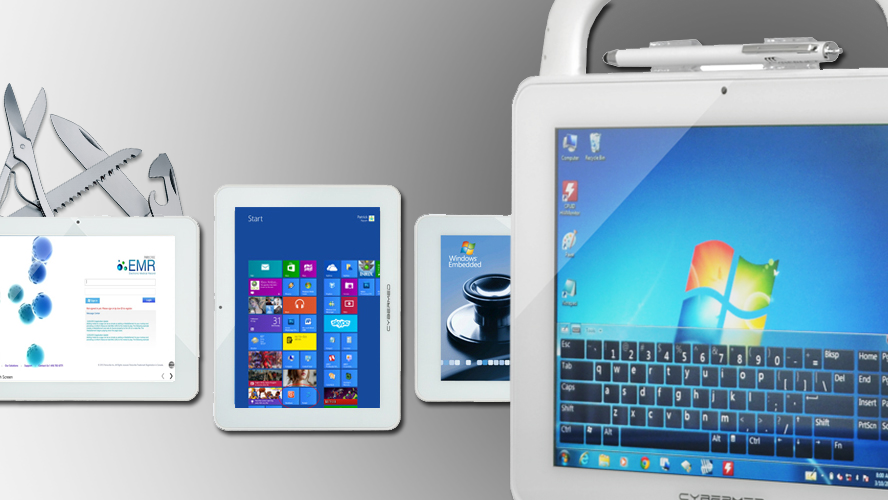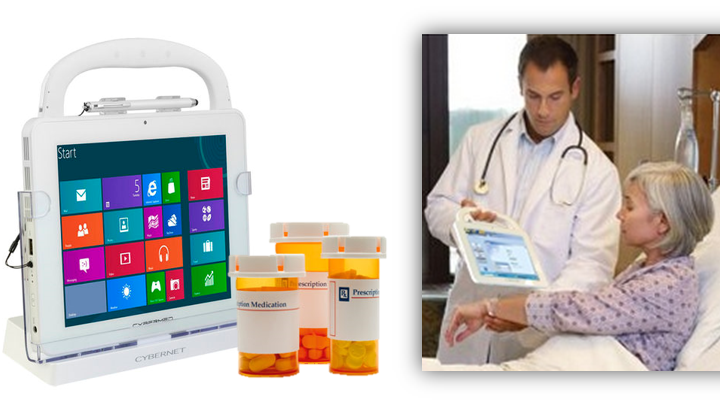Over five thousand years have passed since the first recorded dentist looked into the mouth of a patient. His modern counterparts deal with even greater challenges from increased competition to government regulation.
Thankfully, new tools and systems are available. Read on to learn about this fascinating field of medicine, three challenges faced by its providers’ and their technological solutions based off various healthcare computer systems.
Dentistry Overview
Article Guide
The medical profession of dentistry is the branch focused on a person’s teeth, gums, and mouth. It is also known as dental medicine and oral medicine. Diagnosis, treatment, and prevention of diseases of teeth, the supporting structures, and diseases of the soft tissues of the mouth are all part of dentistry. Note many systemic conditions like diabetes, osteoporosis, and HIV sometimes first show up in one’s mouth before showing elsewhere in the body.
Providers of oral medicine are called dentists. Some of their major tasks include:
- Evaluates the overall health of their patients.
- Perform clinical procedures ranging from exams, fillings, and crowns to extractions and corrective surgeries.
- Identify, diagnose, and treat oral conditions.
Dentists may also specialize. Endodontics (root canals) and Periodontics (gum disease) are two such specializations in dentistry.
Dentists don’t work alone. Their dental team is composed of dental assistants, hygienists, technicians, and therapists. All work together to provide the best of care for patients.
Dentists can be found working in private offices, hospitals, or institutions such as military bases and prisons.
Employment Market for Dentistry
According to figures from the Bureau of Labor Statistics, employment for dentistry is projected to grow at around 6 percent per year between 2021 through 2031. It’s growing at an average pace and reasons range from changes in healthcare law, a growing population, and retirement.
Did You Know?
The earliest known dentist recorded was the ancient Egyptian known as Hesi-Re (also spelled Hesi-ren and Hesyre). He lived about 2660 BC and was not only known as the “chief of dentists” but was also the head of physicians of the court as well as carrying other religious and secular titles and duties.
The French surgeon Pierre Fauchard (1679 – 1761) is considered the “father of modern dentistry.” Among his many accomplishments was the introduction of fillings as a form of treatment for cavities.
The world’s first school for dentistry opened on February, 21st, 1828, in Bainbridge, Ohio. Just over a decade later (1840), the Baltimore College of Dental Surgery, the first dental college, opened in Baltimore, Maryland.
Three Challenges and Tech Solutions
The dental industry, like the rest of healthcare, faces numerous challenges. Dental practices face increasing costs and employee shortage, patient expectations, and technological changes and shifts. Several are investing in the latest equipment and technology in order to outsmart these challenges and offer premium dental care to patients.
How does a dental office attract new clients? Keep in touch outside of office hours? Make the dental practice as efficient as possible? We address these three challenges and their possible tech solutions in the following.
Dental Digital Front Door Marketing
People use the Internet for just about everything. This includes finding a dentist. Having a modern website with an easy-to-use “digital front door” demonstrates credibility and authority. The site should:
- Be optimized for search engines (particularly for local searches)
- Be up-to-date as possible especially with contact information and location address
- Provide staff information
- Display payment plans from acceptable insurances to discounts for cash payments
- Showcase social media and patient review information
Teledentistry Keeps in Touch
The onset of COVID-19 in 2020 brought telemedicine to the public consciousness as healthcare sought ways to continue treating non-urgent patients while protecting them as well as the medical staff. Teledentistry worked similarly, providing a setting for dentists to provide patient care ranging from medication to answering questions about dental procedure or aftercare. Patients expect to continue seeing teledentistry options from dental offices even after restrictions have been lifted.
Multi Solutions from Dental Computers
Many tech-centric dental trends look to reduce the average dental practice overhead significantly while cutting down procedure times. A simple one is switching over to touchscreen medical computers.
Touchscreens are naturally more intuitive. Dental staff don’t waste valuable time learning and adjusting fiddly external controls. Touchscreens allow the user to simply touch exactly what they need to control or alter. This becomes even more important on medical tablets and their smaller surfaces.
Many medical computers and tablets are built with antimicrobial* casings to protect the casing from deterioration and degradation. Interior components are protected from stray water blasts during routine dental procedures like teeth cleaning thanks to an IP65 sealed front bezel.
Fanless cooling systems, used in many medical computers, make no noise. This is useful in dentistry because of the variety of cleaning tools used. Many like piezoelectric and sonic scalers, and ultrasonic scalers and cleaners, emit high enough levels of sound that prolonged exposure over many years could possibly lead to hearing loss or tinnitus, a constant ringing in the ears. Fanless PCs are silent and won’t contribute to possible hearing damage.
Closing Comment
Dentistry is the medical specialty that deals with oral medicine like teeth and gum health. Like all healthcare, dentists and their teams have many challenges like attracting new patients to healthcare regulations.
Contact an expert at Cybernet if you’re a dentist or work in a dental office and are looking to see how medical computers and tablets may be the solution to your challenges.
Join the conversation and connect with us on this and other relevant topics – Follow us Facebook, Twitter, and Linkedin.
Why Medical Tablets are the “Swiss Army Knife” of IT solutions
May 25, 2015
Over recent years, healthcare professionals have steadily migrated from traditional workflow platforms to modern alternatives that allow for more streamlined management procedures. The driving force that fuels this…
0 Comments5 Minutes
Implementing Efficient Medication Dispensing Systems through the Use of Medical Tablets and Mobile Solutions
April 6, 2015
Many hospitals and healthcare facilities have increasingly adopted a variety of mobile solutions to address a number of task-related issues. The influx of technological tools like all- in-one computers and medical…
0 Comments4 Minutes
Medical Tablets are Essential as Patient Engagement Solutions
October 8, 2020
For the past few years, healthcare has been in the midst of a pivot towards patient empowerment. Value-based care, the abandonment of fee-for-service payment models, pushes to allow patients to access their own data,…
0 Comments12 Minutes
You Can't
Learn from a Pop-up
But we can deliver knowledge to your inbox!
We dive deep in the industry looking for new trends, technology, news, and updates. We're happy to share them with you.
Knowledge, News, and Industry Updates Right in Your Inbox





